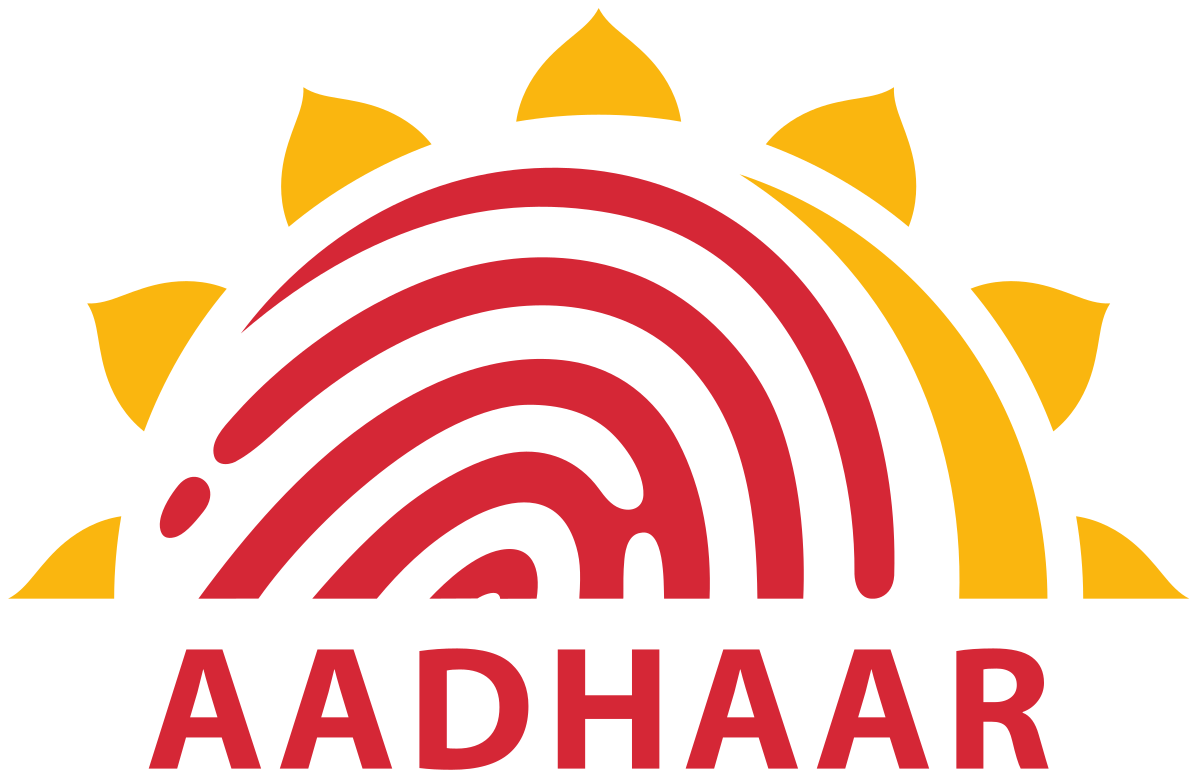Secure Your Future by Investing in Your Wife’s Name with Post Office TD Scheme
The Post Office Time Deposit (TD) scheme is one of the most reliable and secure investment options available in India today. Backed by the Government of India, this scheme offers guaranteed returns, making it a favorite among risk-averse investors who want to grow their savings without worrying about market fluctuations. If you’re looking for a safe way to invest your money and earn a steady profit, the Post Office TD scheme is worth considering. In this article, we’ll explore how investing ₹2 lakh in your wife’s name under this scheme can yield a profit of ₹29,776 in just two years. We’ll also dive into the details of the scheme, its benefits, eligibility, and why it’s a smart choice for conservative investors in 2025.
What is the Post Office Time Deposit Scheme?
The Post Office Time Deposit scheme, also known as the National Savings Time Deposit Account, is a government-backed savings plan offered by India Post. It works similarly to a fixed deposit (FD) offered by banks but comes with the added advantage of being fully secure due to the sovereign guarantee of the Government of India. This scheme allows you to deposit a lump sum amount for a fixed tenure and earn a predetermined interest rate, ensuring steady and guaranteed returns.
The scheme is particularly popular in rural and semi-urban areas where access to banking services may be limited. However, it’s equally appealing to urban investors who value safety and reliability over high-risk, high-reward options. With flexible tenures ranging from one to five years, the Post Office TD scheme caters to a wide range of financial goals, whether you’re saving for a short-term need or planning for the long term.
Current Interest Rates for 2025
As of July 2025, the Post Office Time Deposit scheme offers competitive interest rates that remain unaffected by the recent repo rate cuts by the Reserve Bank of India (RBI). Unlike bank fixed deposits, which have seen a decline in interest rates due to the RBI’s monetary policy changes, the Post Office TD scheme continues to provide stable and attractive returns. The interest rates for different tenures are as follows:
- 1-year tenure: 6.9% per annum
- 2-year tenure: 7.0% per annum
- 3-year tenure: 7.1% per annum
- 5-year tenure: 7.5% per annum
These rates are reviewed quarterly by the Ministry of Finance, but they are determined based on government securities’ yields, ensuring they remain competitive. For the purpose of this article, we’ll focus on the 2-year tenure, which offers a 7.0% annual interest rate, as it aligns with the scenario of earning ₹29,776 in profit by investing ₹2 lakh.
How Does the ₹2 Lakh Investment Work?
Let’s break down how investing ₹2 lakh in your wife’s name under the Post Office Time Deposit scheme can result in a profit of ₹29,776 in two years. The calculation is straightforward, thanks to the fixed interest rate and the compounding effect.
When you invest ₹2,00,000 in a 2-year Post Office TD account at a 7.0% annual interest rate, the interest is compounded quarterly but paid annually. This means the interest earned is added to the principal every three months, and you earn interest on the increased amount in the next quarter. Over two years, this compounding effect helps your money grow steadily.
Using a Post Office FD calculator or the compound interest formula, the maturity amount for a ₹2,00,000 investment at 7.0% for two years comes to approximately ₹2,29,776. This includes the principal amount of ₹2,00,000 plus an interest of ₹29,776. The total return is guaranteed, and there’s no risk of losing your initial investment, making it an attractive option for those who prioritize safety.
Why Choose the Post Office Time Deposit Scheme?
There are several reasons why the Post Office TD scheme stands out as a preferred investment option in 2025. Let’s explore the key benefits that make it a smart choice for investors.
1. Guaranteed Returns with No Market Risk
Unlike stock market investments or mutual funds, which are subject to market volatility, the Post Office TD scheme offers fixed returns that are unaffected by economic ups and downs. The 7.0% interest rate for a 2-year tenure is locked in at the time of investment, ensuring you know exactly how much you’ll earn by the end of the term. This predictability is a major draw for conservative investors who want to avoid the uncertainty of fluctuating markets.
2. Backed by the Government
The Post Office TD scheme is backed by the Government of India, making it one of the safest investment options available. Even if banks or other financial institutions face challenges, your money in a Post Office TD account is secure. This government guarantee provides peace of mind, especially for those investing a significant amount like ₹2 lakh.
3. Unaffected by RBI Repo Rate Changes
The RBI has reduced the repo rate by 1.00% between February and June 2025, leading to lower interest rates on bank loans and fixed deposits. However, the Post Office TD scheme remains insulated from these changes. The interest rates for Post Office savings schemes are set by the Ministry of Finance and are not directly tied to the RBI’s policies. This stability makes the scheme a reliable choice in a time of fluctuating bank FD rates.
4. Flexible Tenure Options
The Post Office TD scheme offers four tenure options—1 year, 2 years, 3 years, and 5 years—allowing you to choose a plan that aligns with your financial goals. Whether you’re saving for a short-term expense like a vacation or a long-term goal like retirement, there’s a tenure that suits your needs. The 2-year tenure, in particular, strikes a balance between earning a decent return and maintaining liquidity.
5. No Upper Limit on Investment
One of the standout features of the Post Office TD scheme is that there’s no maximum limit on the amount you can invest. The minimum deposit is ₹1,000, and additional deposits must be in multiples of ₹100. This flexibility allows you to invest as much as you want, whether it’s ₹2 lakh or a higher amount, depending on your financial capacity.
6. Tax Benefits for 5-Year Tenure
While the 2-year tenure discussed here doesn’t offer tax benefits, the 5-year Post Office TD account qualifies for a tax deduction under Section 80C of the Income Tax Act, 1961. You can claim a deduction of up to ₹1.5 lakh per year on the invested amount, making it a tax-efficient option for long-term investors. Even for the 2-year tenure, the interest earned is taxable as per your income tax slab, but there’s no Tax Deducted at Source (TDS) on the interest, which simplifies tax planning.
7. Easy Accessibility
With over 1.55 lakh post offices across India, including 90% in rural areas, the Post Office TD scheme is easily accessible to people in both urban and rural regions. You can open an account at your nearest post office or even online through the India Post mobile banking app or internet banking portal. This widespread reach makes it a convenient option for investors across the country.
8. Joint Accounts and Nomination Facility
The Post Office TD scheme allows you to open an account individually, jointly with up to three people, or on behalf of a minor. This flexibility makes it suitable for families, couples, or parents saving for their children. Additionally, you can nominate a beneficiary to claim the investment in case of unforeseen circumstances, adding an extra layer of security.
Who Can Invest in the Post Office TD Scheme?
The Post Office Time Deposit scheme is open to a wide range of investors, making it inclusive and versatile. Here’s who can invest:
- Indian Residents: Any adult Indian citizen can open a TD account, either individually or jointly.
- Minors: Minors above 10 years of age can open an account in their own name. For minors below 10, a guardian can open and manage the account on their behalf.
- Joint Accounts: Up to three adults can open a joint account, with equal shares in the investment.
- No Restrictions on Number of Accounts: You can open multiple TD accounts without any limit, as long as the minimum deposit requirement of ₹1,000 is met for each account.
However, Non-Resident Indians (NRIs), trusts, companies, and other organizations are not eligible to invest in this scheme.
How to Open a Post Office Time Deposit Account
Opening a Post Office TD account is a simple and straightforward process. You can do it either online or by visiting your nearest post office. Here’s a step-by-step guide:
Offline Process:
- Visit a Post Office: Locate the nearest post office branch offering the TD scheme.
- Collect the Application Form: Request the TD account opening form from the post office counter.
- Fill in the Details: Provide accurate information, including the deposit amount, tenure, nominee details, and your preferred mode of interest payout.
- Submit Documents: Attach the required documents, such as:
- Photo ID proof (Aadhaar card, voter ID, passport, etc.)
- Address proof (electricity bill, water bill, Aadhaar card, etc.)
- PAN card
- Two passport-size photographs
- Birth certificate (for minor accounts)
- Make the Initial Deposit: Deposit a minimum of ₹1,000 via cash or cheque. If paying by cheque, the account opening date will be the date the cheque is cleared.
- Receive Confirmation: Once the application is processed, you’ll receive a passbook or certificate confirming your investment.
Online Process:
- Download the India Post App: Get the India Post Mobile Banking app from the Google Play Store or Apple App Store.
- Log In or Register: Use your existing credentials or sign up with your name, email, phone number, and address.
- Select TD Account: Navigate to the “Requests” tab and choose “Open POFD Account.”
- Enter Details: Fill in the required information, such as the investment amount, tenure, and nominee details.
- Transfer Funds: Use net banking or another online payment method to transfer the deposit amount to your TD account.
- Get Confirmation: You’ll receive a confirmation with details of your TD account, including the interest rate and maturity amount.
Calculating Returns: The Math Behind ₹29,776 Profit
To understand how the Post Office TD scheme generates a profit of ₹29,776 on a ₹2 lakh investment over two years, let’s look at the compound interest formula used for the calculation:
A = P (1 + r/n)^(nt)
Where:
- A = Maturity amount
- P = Principal amount (₹2,00,000)
- r = Annual interest rate (7.0% or 0.07)
- n = Number of times interest is compounded per year (4, since it’s quarterly)
- t = Tenure in years (2)
Plugging in the values:
A = 2,00,000 (1 + 0.07/4)^(4*2)
A = 2,00,000 (1 + 0.0175)^8
A = 2,00,000 (1.0175)^8
A ≈ 2,00,000 * 1.14888
A ≈ ₹2,29,776
The maturity amount is approximately ₹2,29,776, which includes the principal of ₹2,00,000 and an interest of ₹29,776. This calculation confirms the guaranteed return promised by the scheme, with no risk of loss.
Tax Implications
While the interest earned on a Post Office TD account is taxable as per your income tax slab, there’s no TDS deducted on the interest, which simplifies the tax-filing process. For example, if you’re in the 20% tax bracket, the tax on ₹29,776 would be approximately ₹5,955, leaving you with a net profit of around ₹23,821 after tax. However, this is still a significant return for a risk-free investment.
If you opt for the 5-year tenure, you can claim a tax deduction of up to ₹1.5 lakh per year under Section 80C, which can further enhance the tax efficiency of your investment. Always consult a financial advisor to understand how the interest income will impact your overall tax liability.
Comparing Post Office TD with Bank FDs
With bank FD rates declining due to RBI’s repo rate cuts, the Post Office TD scheme has become more attractive in 2025. While some private banks like DCB, RBL, and YES Bank offer up to 7.5% for 3-year FDs, major banks are offering rates around 6.9% or lower. The Post Office TD scheme’s 7.0% rate for a 2-year tenure is competitive, and its government backing makes it safer than bank FDs, which are insured only up to ₹5 lakh by the Deposit Insurance and Credit Guarantee Corporation (DICGC).
Additionally, Post Office TD accounts don’t offer special rates for senior citizens, unlike some bank FDs that provide an additional 0.25% to 0.50% for seniors. However, the lack of market risk and the ability to open multiple accounts without an upper limit make the Post Office scheme a compelling choice.
Other Post Office Savings Schemes
In addition to the Time Deposit scheme, India Post offers a range of other savings schemes that cater to different financial needs. Here’s a quick overview:
- Post Office Savings Account: Offers a 4% interest rate with a minimum balance of ₹500 and no maximum limit.
- National Savings Recurring Deposit (RD): A 5-year scheme with a 5.8% interest rate, requiring a minimum monthly deposit of ₹100.
- Post Office Monthly Income Scheme (MIS): Provides a 7.4% interest rate with monthly payouts, ideal for those seeking regular income. The maximum investment is ₹9 lakh for a single account and ₹15 lakh for a joint account.
- Public Provident Fund (PPF): A 15-year scheme with a 7.1% interest rate, offering tax-free interest and deductions under Section 80C.
- National Savings Certificate (NSC): A 5-year scheme with a 7.7% interest rate, eligible for Section 80C deductions.
- Sukanya Samriddhi Yojana (SSY): Designed for girl children, it offers an 8.2% interest rate with tax benefits.
- Senior Citizens Savings Scheme (SCSS): A 5-year scheme for those above 60, offering an 8.2% interest rate.
- Kisan Vikas Patra (KVP): Doubles your investment in approximately 115 months at a 7.5% interest rate.
Each of these schemes has unique features, making them suitable for different types of investors. The Post Office TD scheme, however, is particularly appealing for those who want a fixed return over a shorter tenure.
Tips for Maximizing Returns
To make the most of your investment in the Post Office TD scheme, consider the following tips:
- Choose the Right Tenure: If you don’t need immediate liquidity, consider the 5-year tenure for higher returns (7.5%) and tax benefits under Section 80C.
- Invest in Multiples: Since there’s no upper limit, you can invest larger amounts to maximize your returns, as long as the deposits are in multiples of ₹100.
- Nominate a Beneficiary: Always nominate a family member to ensure your investment is secure in case of unforeseen events.
- Reinforce Savings Discipline: Use the interest earned to reinvest in other Post Office schemes, such as the Recurring Deposit or Monthly Income Scheme, to create a cycle of savings and growth.
- Check Interest Rates Regularly: Since rates are reviewed quarterly, stay updated by visiting the India Post website or your nearest post office to ensure you lock in the best rate.
Things to Keep in Mind
While the Post Office TD scheme is a low-risk investment, there are a few things to consider before investing:
- Premature Withdrawal: You cannot withdraw your money within the first six months. If you withdraw after six months but before one year, you’ll earn only the Post Office Savings Account interest rate (4%), and any excess interest paid will be deducted. After one year, premature withdrawal is allowed with a penalty of 1% on the interest rate for the completed period.
- Taxable Interest: The interest earned is taxable, so factor this into your financial planning. Consult a tax professional to understand your tax liability.
- No Senior Citizen Benefits: Unlike some bank FDs, the Post Office TD scheme doesn’t offer higher rates for senior citizens, so seniors may want to explore the Senior Citizens Savings Scheme for better returns.
- Limited Liquidity: The scheme is designed for fixed tenures, so it’s not ideal if you need quick access to your funds. Consider your liquidity needs before investing.
Why Invest in Your Wife’s Name?
Investing ₹2 lakh in your wife’s name under the Post Office TD scheme can be a strategic financial move. Here’s why:
- Financial Empowerment: It helps create a separate financial portfolio for your wife, promoting her financial independence.
- Tax Planning: If your wife is in a lower tax bracket or has no taxable income, the interest earned may be tax-free or taxed at a lower rate, maximizing your family’s overall returns.
- Diversification: Spreading investments across family members can diversify your financial portfolio and reduce risk.
- Nomination Benefits: By nominating each other, you ensure that the investment is secure and easily transferable in case of unforeseen circumstances.
This approach not only secures your family’s financial future but also fosters a sense of shared responsibility in wealth creation.
Conclusion
The Post Office Time Deposit scheme is a golden opportunity for risk-averse investors looking for guaranteed returns in 2025. With a 7.0% interest rate for a 2-year tenure, investing ₹2 lakh in your wife’s name can yield a profit of ₹29,776, making it a reliable and hassle-free investment option. The scheme’s government backing, immunity to RBI repo rate changes, and accessibility through India Post’s vast network make it a standout choice for conservative investors.
Whether you’re saving for a family goal, a major purchase, or simply want to grow your wealth safely, the Post Office TD scheme offers a secure and predictable way to achieve your financial objectives. Before investing, consult a financial advisor to ensure the scheme aligns with your goals, and verify the latest interest rates at your nearest post office or on the India Post website. Start your investment journey today and watch your savings grow with confidence!
Disclaimer: The information provided in this article is for general financial education purposes. Interest rates and scheme details may change, so always check with the official India Post website or your nearest post office for the latest information. Consult a financial advisor before making investment decisions.




